Antarctica, says writer Bill McKibben, is "…this planet’s greatest margin, its strangest edge.”
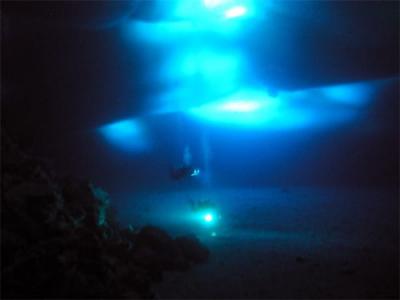
Nick and Stacy under the ice. Photo by Rob Robbins.
And the edge of the ocean as it meets the land under Antarctic ice yields some very strange creatures. This morning, Stacy and Nick dove with Rob Robbins at the jetty again and came across a GIGANTIC (1 meter across the bell) jellyfish.
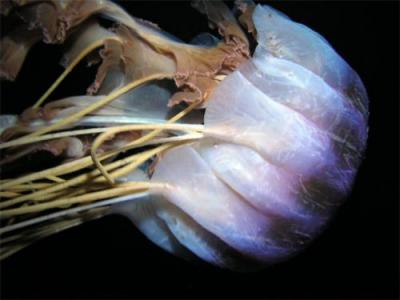
Giant Jellyfish at the jetty. Photo by Rob Robbins.
Jellyfish have stinging tentacles and are "cousins" of the anemone I showed yesterday. Both jellies and anemones are Cnidarians (in Phylum Cnidaria) which translates to stinging-cell animals. If the tentacles hang down it is termed a medusa shape (like Medusa with snake-hair!) and if the tentacles point up they have the polyp shape. Some jellyfish try to be tricksters like the upside-down-jellyfish Cassiopeia that is common in Florida. It hangs out on the bottom of the ocean with its tentacles up!
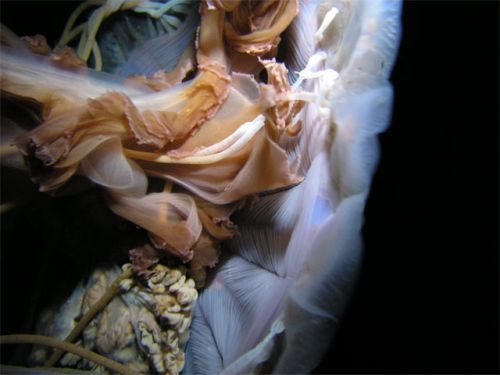
Close up of giant jellyfish. Photo by Rob Robbins.
Corals are also Cnidarians in polyp form. You can even see the individual polyps in this eight-inch tall colonial soft coral. Picture the many individuals zapping small food (zooplankton) with their tentacles and getting nourishment.
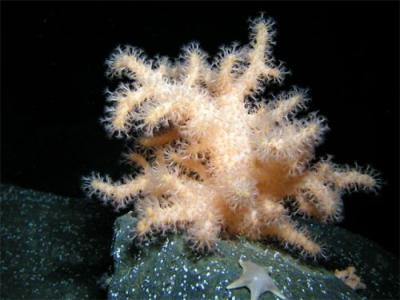
Soft Coral at the jetty. Photo by Rob Robbins.
Stacy had set out a bag of left-over dinner bones on her last dive here and Rob took pictures of the scavengers feasting on the bones. When the bones are clean, Stacy will look for a newly discovered genus of worms called Osedax (bone devourers) that have been found on whale bones in the deep sea and other places.
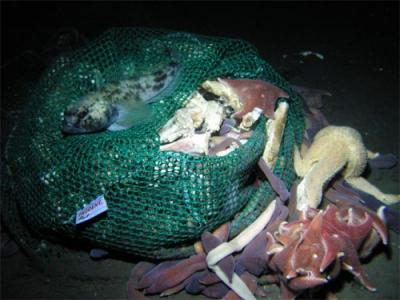
Starfish are huddling around the bones, and nemertean worms are having a scavengers delight.
Photo by Rob Robbins.
Starfish are Echinoderms (spiny-skinned animals) and their mouth is in the middle on their underside. Some can extrude their stomach out through their mouth, release digestive enzymes, and nosh externally, then bring in the "slurpified" dinner.
While the following crinoid may not look much like a starfish, it is also an echinoderm. Crinoids may look alien but they are fairly abundant in parts of the ocean and they are UBIQUITOUS (word-for-the-day) in the marine fossil record!
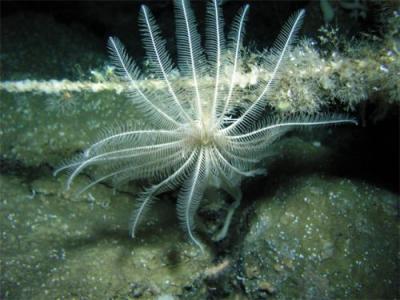
Crinoid at the jetty. Photo by Rob Robbins.
The beauty and drama of the ecosystem under the sea ice is awesome, but usually hidden from our eyes. We get to see glimpses of the food chain in our Crary lab tanks though.
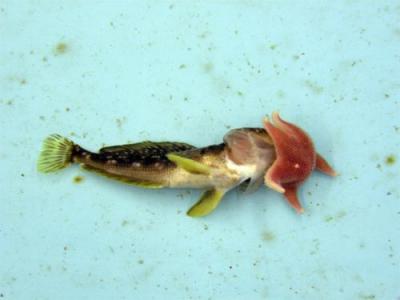
This starfish, in the Crary Lab tank, found a dead fish to munch on.
And to tantalize you further: On Monday evening a new "creature" entered the Crary lab fish tank for the first time! SCINI had her first Antarctic tank dive and she chased the fish around the Crary lab fish tank with all thrusters engaged!
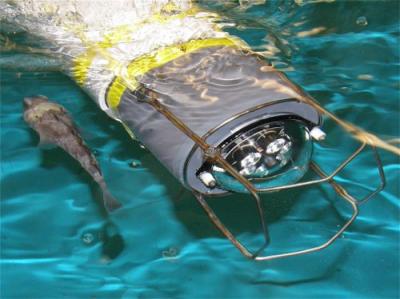
The "head" end of the SCINI with the Elphel camera visible.
We were so excited by the positive results of the tank dive that we took SCINI out for her first ocean dive that very night. Stay tuned for SCINI living up to her name: Submersible Capable of under Ice Navigation and Imaging!
A huge thank you to Rob Robbins for use of his underwater photos.

